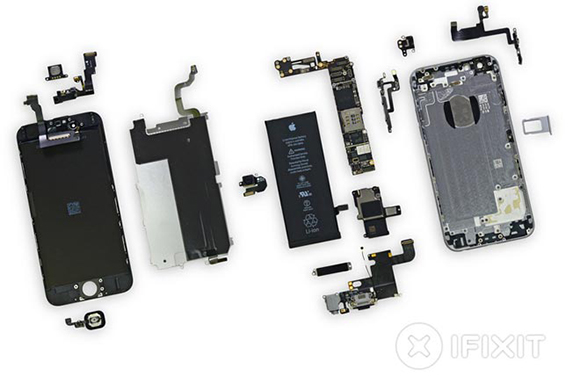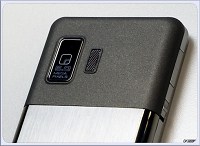Counterclockwise gives us an opportunity to look back at the past and reminisce about how different it was back then. Or as it turns out, that things tend to repeat year after year – Apple's iPhone and iOS release plan certainly follows a set path.
iPhone launches
This week the iPhone 6 and 6 Plus launched in retail stores after a week of pre-orders. Last year things went slower – the iPhone 5c was just starting its pre-order in the third week of September (to be delivered a week later). The iPhone 5s didn't even get a pre-order.
Actually that was very similar the iPhone 5 time frame too, pre-order started on September 14 with the shipment date set for September 21.
So this year Apple is slightly ahead of schedule and it's enjoying great sales too. A couple of years ago the iPhone 5 scored 2 million pre-orders in the first 24 hours, doubling the iPhone 4S numbers from the previous year.
Growth have slowed down since then, two years later it took the iPhone 6 and iPhone 6 Plus combined to double the pre-order numbers again to 4 million.
New iPhones bring new iOS too
This week saw the rollout of the latest iOS version, which coincides with the launch of the new iPhones. This is standard Apple practice, last year iOS 7 was rolling out as people were queuing up for the iPhone 5s. Two years ago it was iOS 6 as people waited for the iPhone 5.
Of course, each new model launches with the new iOS already installed, it's for the benefit of those who skip a year (or two, or three) that the new version is released. And inevitably each year the Internet gets flooded with reports how the latest OS makes the older devices unbearably sluggish.
Chipsets
In 2008 Apple acquired P.A. Semi, a chipset designer, and years later in 2012 unveiled its first custom chipset, the Apple A6, to be used in the iPhone 5. Unlike previous chipsets this one wasn’t based on ARM-designed cores (but still ran ARM instructions).
The CPU core is codenamed Swift and it lived up to its name – a dual-core processor at just 1GHzcaught up to the Exynos 4 Quad and Tegra 3 chipsets that powered the Android flagships of the day. It doubled what the iPhone 4S had to offer with its dual-core Cortex-A9 processor.
That test was done with Geekbench and this year Apple has continued to push performance since. The latest iPhone 6 and 6 Plus beat the iPhone 5s hands down, itself quite a bit faster than the iPhone 5. Apple promised only a 25% increase over last year's model so we'll have to wait until benchmark makers familiarize themselves with the new iOS 8 to make sure the numbers are correct.
Apple is still using PowerVR GPUs from Imagination but keeps fitting more and more powerful graphics. For example, the iPhone 5s practically doubled the performance of the iPhone 5 GPU. Here Apple promised gains of up to 50% but the pixel count even on the smaller iPhone 6 nearly 40%, which eats into performance gains.
You can't blame Apple for going its own way, the market had no clear leader back then. Tegra 3 powered most devices, but Samsung was pushing hard for its Exynos chipsets and Qualcomm wasn’t as dominant as it is today.
Three years ago the Snapdragon chipset maker unveiled a roadmap that showed plans for stunning (for the time) quad-core processors running at 2.5GHz. They were a few months away reportedly but it took them years to arrive on smartphones. And with the Snapdragon 801 they have and are already reaching towards 2.7GHz with Snapdragon 805.
microSD
Around the same time three years ago SanDisk unveiled a massive amount of storage in a teeny, tiny form factor – the 64GB microSDXC. It went on sale at $220. Pricy! Of course, price for cards of that capacity has fallen a lot since then.
SanDisk recently unveiled another 64GB microSD card, even more expensive at $300 despite three years of price cuts. That card is special though it can write data at up to 90MB/s, faster than needed even for today's beastly smartphones.
Three years after the 64GB microSD card SanDisk has doubled the available storage to 128GB. It's been a long wait but with lagging internal storage capacities having a card slot is still a big plus for many people. Unless they buy iPhones, of course.
A long time ago in a Glaxy far, far away
While looking through our archives for this article we spotted a typo – from six years ago! After a short panic we realized it wasn’t a typo at all, at least not ours. In September 2008 Asus unveiled the Glaxy7 smartphone.
Asus Glaxy7Samsung didn’t announce the I7500 Galaxy until 2009, the phone that gave its name to the most successful Android line of smartphones to date. So things were this close to a collision of names.
Anyway the Asus ran Windows Mobile and featured a quote-unquote "massive" 3.5" touchscreen with WVGA resolution, 5MP megapixel camera and a stainless steel body (that feature hasn’t aged).



















